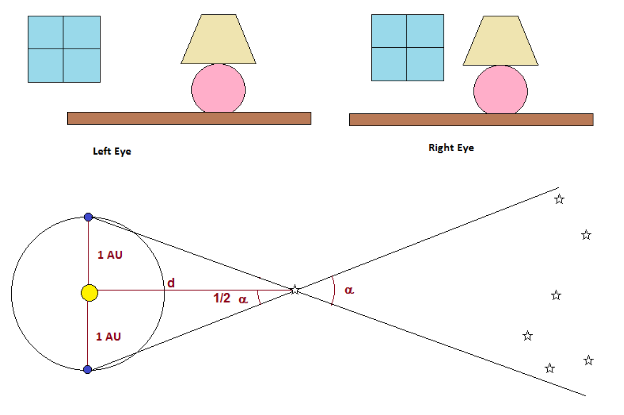Foundation
General Knowledge
General Physical Geography
Question
What is the parallax formula and how is it used to calculate the distance between two stars?
Know your College Admission Chances Based on your Rank/Percentile, Category and Home State.
Get your JEE Main Personalised Report with Top Predicted Colleges in JoSA
Solution
The parallax formula states that the distance to a star is equal to divided by the parallax angle, , where is measured in arc-seconds, and is parsecs.
Explanation:
Parallax is a method of using two points of observation to measure the distance to an object by observing how it appears to move against a background. One way to understand parallax is to look at a nearby object and note its position against a wall. If you look with just one eye, then the other, the object will appear to move against the background.
Because your eyes are separated by several centimeters, each eye has a different perspective of where the object is relative to the background. The closer the object is, the more it appears to move relative to the background. This is true in astronomy as well, but on a much larger scale.
In astronomy, the distances to other stars is too great to measure using two objects on the Earth's surface. Lucky for us, the Earth itself moves. If we made two observations of the same star on opposite sides of the Earth's orbit, we would have a separation of astronomical units, or . One is the average distance from the Sun to the Earth.
This is enough to get a noticeable angle , between the star's two apparent locations. IN the image above, we can see that by cutting in half, we get a right triangle where one leg is the distance the sun and the other star. Lets let . We can to find distance to that star.
Since the star will be very far away, we can make the assumption that is about equal to . That simplifies our parallax formula to;
, or in other words,
Astronomical units are not the most convenient units to work with, though, so instead we define a parsec to be the distance to a star that shows arc-second of parallax angle. Our formula then becomes;
parsecs
Where is measured in arc-seconds parsec is about light years.

Please subscribe our Youtube channel to unlock this solution.